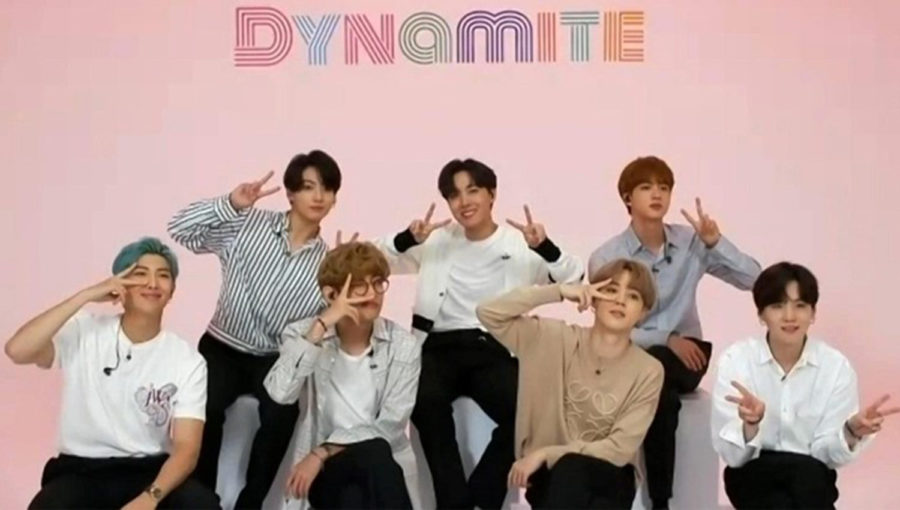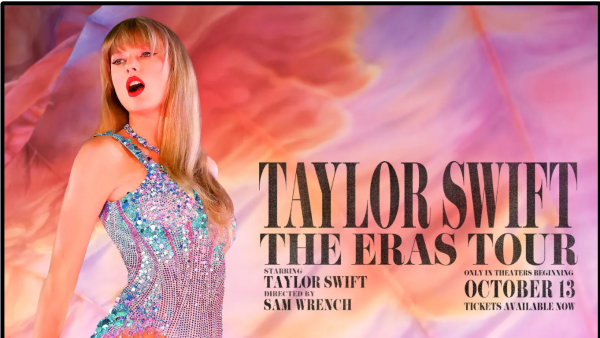K-pop Captures Eyes, Ears, and Hearts of Americans
BTS brought K-pop to the Grammy’s with their nomination for best pop/duo performance for their single “Dynamite.”
From 1992 to now, the sensation that is K-pop has permanently changed the music industry.
“The fact that the boy group, BTS, has received a Grammy nomination speaks volumes about the impact the genre’s having now in the music industry, so just to be nominated shows that K-pop is now recognized as a major player in the industry,” said history teacher Jane Layton. Ms. Layton has seen the impact K-pop has had on her students in the past years.
K-pop is bringing something new to the table that people are interested in. Their distinct vocalists, powerful rappers, captivating group dances, stunning music videos, and social media savvy all contribute to the fact that K-pop is stealing the hearts of fans and taking over the world.
“The music videos, songs, and overall aura of these groups were very distinctive from the typical western pop-star (which I, at the time, was more accustomed to),” said 7th grader Zoya A.
“After learning more about these groups and viewing more of their content, I found myself falling deeper and deeper into this infamous K-pop-hole, eventually venturing to other groups such as Twice, TXT, Itzy, and many more. Before I knew it, I was a K-pop stan.”
One of the most important elements in K-pop is performance. The members are called idols, which, according to a BBC article entitled “I could have been a K-pop idol – but I’m glad I quit,” means someone who does everything: model, act, sing, and dance.
In K-pop, there are two official positions for dancing, main dancer and lead dancer. The website kprofiles describes the difference. The main dancer is the one with the best skills, who usually gets the solos, and the lead dancer is the 2nd strongest dancer, and when the group is dancing in unison, they are positioned in the front. The same idea works with the singing. The main vocalist has the best singing technique, so gets solos and usually sings the chorus, whereas the lead vocalist often sings first or does the verses. There is also a main rapper and lead rapper.
But no matter what the idol’s position is in the group, dancing is always a major part of every member’s training.
Each person, female or male, must know how to dance and dance well because of the intricate choreography. There is no doubt the choreographies in K-pop are more exhausting and elaborate than those in America. Idols also have to dance continuously while singing, which requires incredible stamina. Performance can first attract people to K-pop songs, and it plays a big role in gaining a fanbase.
“K-pop idols are talented singers for sure, but the dancing scene in K-pop is very, very intense. Almost every K-pop (title track) song has a dance that goes with it. These dances can have simple choreographies with key points, like a certain dance move that is repeated throughout the song, which often becomes a viral dance, or they can be very complex and expressive. But either way, K-pop performances definitely stand out a lot,” Zoya said.
Learning about the idols’ personalities can also take someone who only listens to K-pop and make them a fully-fledged fan. Variety shows such as Weekly Idol, Knowing Bros, and Running Man are programs in South Korea that are similar to talk shows in America. However, they are far more casual and focus on what sets one idol apart from their group members by focusing on personality. We can also see and hear from their members how they act when they are more relaxed. Knowing that K-pop idols are human, too, can help people relate to them more, even if there is an emphasized pressure on being perfect in South Korea. This ideal is explored in the Canadian CBC article “The punishing pressures behind K-pop perfection.”
Social media and variety shows are a big part of why people become obsessed with K-pop. They develop biases (favorite group members) and become engrossed with neverending content from their favorite group.
“As social media and streaming platforms have evolved, so too has an ultra-socially engaged fan base — one that not only devotes entire Twitter accounts to sending its favorite artists up the Billboard charts but also buys out arenas to support them and tunes in to splashy TV specials just to catch a glimpse of them, sending Korean acts ever nearer to the forefront of American pop,” said Billboard, an international magazine devoted to music.
Zoya credits these shows and social media accounts with feeling like these idols are sharing personal information and quirks, as well as gratitude toward their fans for supporting them.
“While Western artists also do such things, it is a norm in the K-pop industry for idols to give their all for fans, often even giving up their private lives —which can get quite extreme. But through this process, fans can feel closer with idols, and therefore create stronger fan bases to support the artists,” Zoya said.
Music streaming also plays a big part in access to the music. In the past, you had to listen to the radio to discover new songs and artists. K-pop is rarely played on American radio stations, causing fewer chances for people from countries other than South Korea to listen to their music. According to Koreaboo, , an online source self-billed as the “biggest k-pop site in the world,” music downloading was also inconvenient, complicated, and a bit dangerous in the past. But now, we can access their music through Spotify, Apple Music, and many other platforms that were not available when K-pop got its start.
For international fans, interacting with their idols was also much more complicated in the past than it is now. For example, when network services such as Instagram and Twitter were not created, Korean idols used Korean websites me2day, UFO Town, and Cyworld to communicate with fans. However, these sites required a Korean resident registration number to join, making it almost impossible for international fans to access them directly. In addition, the lack of subtitles for different languages in Korean TV shows is another difficulty for global fans.
“I think that social media gives K-pop new venues to showcase their work even when they don’t have a lot of radio play time in the United States. Even before K-pop was, say, a part of Billboard’s Top 20, the social media gave them an audience and an opportunity to spread their music into the States,” said Ms. Layton.
Some people discover K-pop the old-fashioned way, by word of mouth.
“I see a lot of my friends who really like their music and sometimes command me to listen to their songs,” said Imani B, a 7th grader. “Maybe that’s how K-pop got worldwide. People like stuff, and they will share with others.”
K-pop is taking over the world, and no one knows how far it will go.







